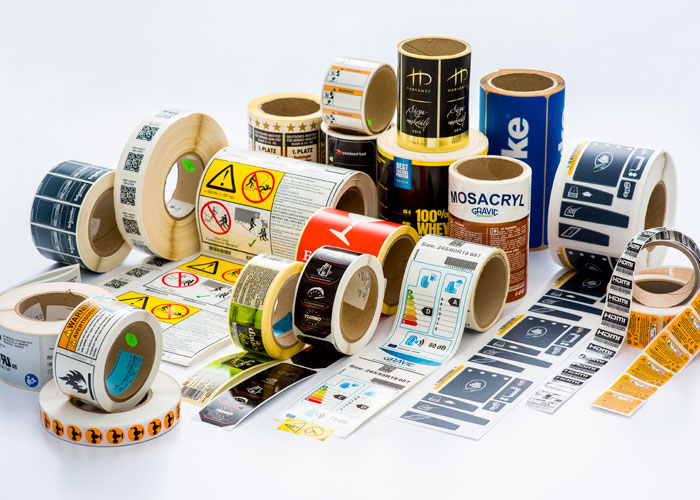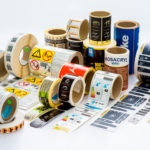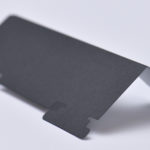Adhesives Part 1
Adhesives: types and applications. Part 1
For over 50 years the Gravic Group has been producing, innovating and customizing adhesive labels that meet many special requirements and standards. Our clients benefit from our wide range of technical adhesives labels, identification labels and other printed adhesives. As industry experts, we are very pleased to share with you our knowledge and expertise gained over many years. In this Blog, you will find very interesting information on Adhesives, their types and various application methods.
Adhesives
An Adhesive (sometimes called as glue, cement or paste) is a non-metallic substance that is applied to 1 or both surfaces of 2 different materials that binds them together and prevents separation. In comparison with other binding techniques, adhesion has both advantages and disadvantages:
Advantages:
- Ability to bond different materials together
- More efficient distribution of stress across a joint
- Cost-effectiveness
- Greater flexibility in design
Disadvantages:
- May include decreased stability at high temperatures,
- Relative weakness in bonding large objects with a small contact surface area and
- Greater difficulty in separating objects during testing
Origins
Adhesives were first mentioned in history 3,300 years ago, when Egyptian carvings depicted the glueing of a piece of veneer to what appears to be a plank of sycamore. In ancient and medieval times, bitumen, tree pitches and beeswax were used as sealants and adhesives. In the 19th century, rubber cements were introduced, but decisive advances in adhesive technology awaited the 20th century, when natural adhesives improved and many synthetics components were developed.
Nowadays adhesives are essential components of shoes, automobiles, cartons, furniture and non-woven fabrics and a host of other products. It has even been used in aircraft manufacturing process and the requirement to get a higher strength and resistance promoted the development and production of high-performance adhesives.
Types of adhesives
All adhesives can be classified using several methods: by chemical nature, by physical form, by relative strength of bond formed, or by mechanism of cure.
Depending on the purpose of its use, every adhesive goes through a phase transition and involves 3 general processes:
- Loss of solvent or dispersant
- Solidification by cooling
- Chemical reaction
In addition, there is one group that retains a liquid state, even if extremely viscous, throughout their useful life. Thus, adhesives are:
- Solvent based
- Hot melt
- Reactive
- Pressure sensitive
In Gravic Group, we are able to use all types of adhesives but on a daily basis we take advantage of using Pressure sensitive (PSA, self-adhesive, self-stick) adhesive. It is a nonreactive adhesive which forms a bond when pressure is applied to bond the adhesive with a surface. No solvent, water, or heat is needed to activate the adhesive. We use it in pressure-sensitive tapes, labels, glue dots, note pads, automobile trim, and a wide variety of other products. This type of adhesives are designed to form a strong bond and hold properly at room temperatures.
The raw materials used as adhesives are mainly polymeric materials, both natural and synthetic. Taking into consideration the costs, natural products (such as starch, dextrin, casein, naturally gums) are still important; however, synthetic ones have largely taken over the adhesive industry, both as modifiers of natural materials and, more importantly, as high-strength, moisture-resistant additives capable of being produced in many readily usable forms.
Application areas
Adhesives are designed for specific applications. Along with their adhesion role, they can also be used for other purposes, such as sealing agents – sealing of areas to prevent oxidation and corrosion, waterproofing, etc. Sealants can be used as electrical or thermal insulators, fire barriers and products for smoothing, filleting or frying.
Both adhesives and sealants are used to bond: metals, plastics, composites, foams, elastomers, wood, glass, ceramics and other sandwich structures.
Here are the main industries where adhesives are widely used:
- Construction
- Consumer adhesives – Products or Electronics
- Packaging
- Automotive and transportation
- Pharmaceutical
- Electrical and Thermal
Our adhesives have been modernized and developed for years to provide the highest quality to our clients. We constantly work on research and investigate new ways to become more environmentally safe. The Bioadhesive market is growing fast and we anticipated it with a real focus on the sustainability of our activities.
There is a lot more that we’d like to share with you about Adhesives, especially on the Applications and industries where we mainly operate in. We are working on Part 2 of this Blog article, so stay tuned for our next Blog and let us know if there are any other topics that you are interested in.
In the meantime, our experts at Gravic Group are always ready to answer your questions and will be glad to setup a quick call with you to discuss your needs in details!
We are grateful for our close collaboration, and we are committed to continuing to evolve and progress to meet your requirements!
Improve your life with Gravic!
Share this post:





